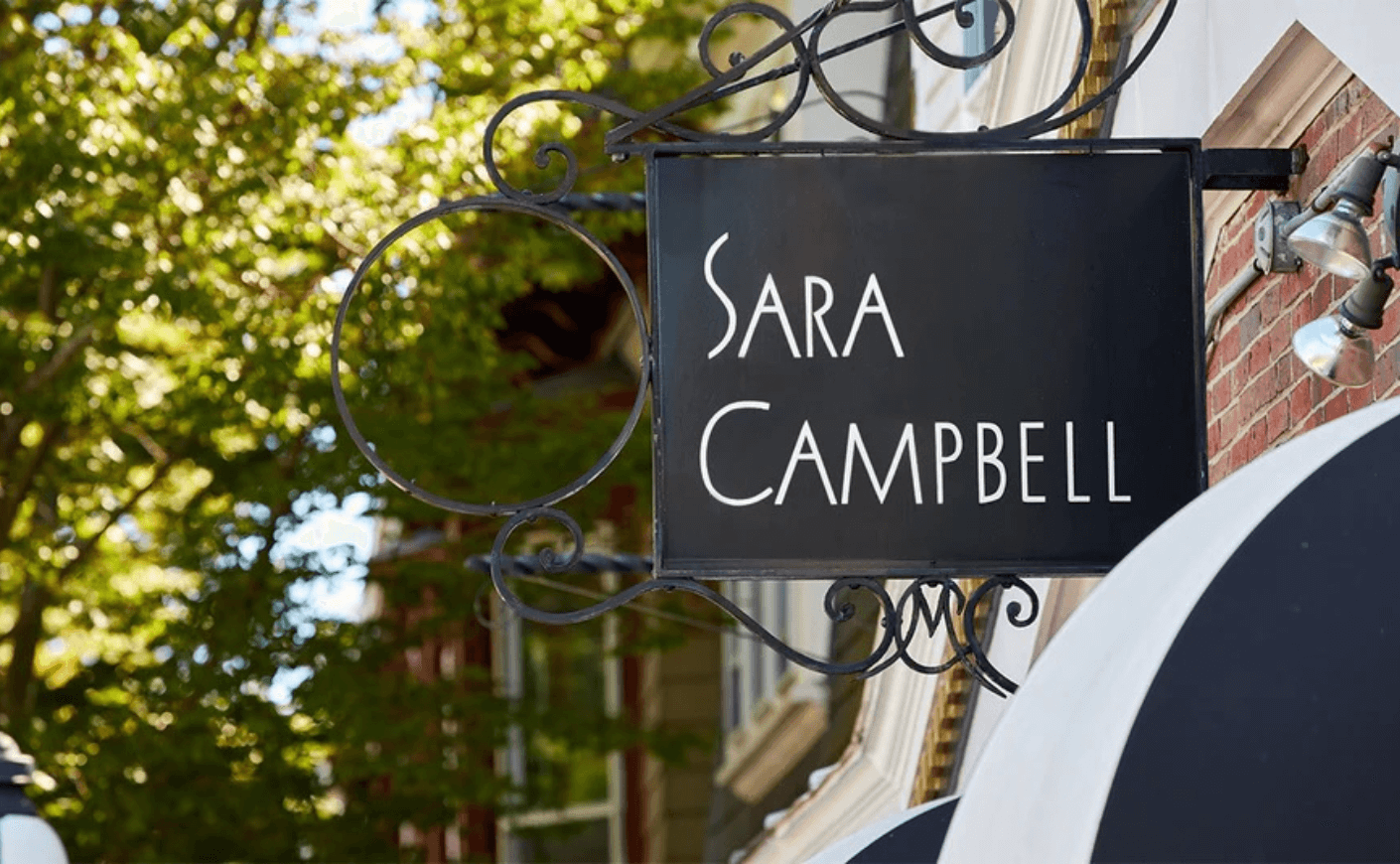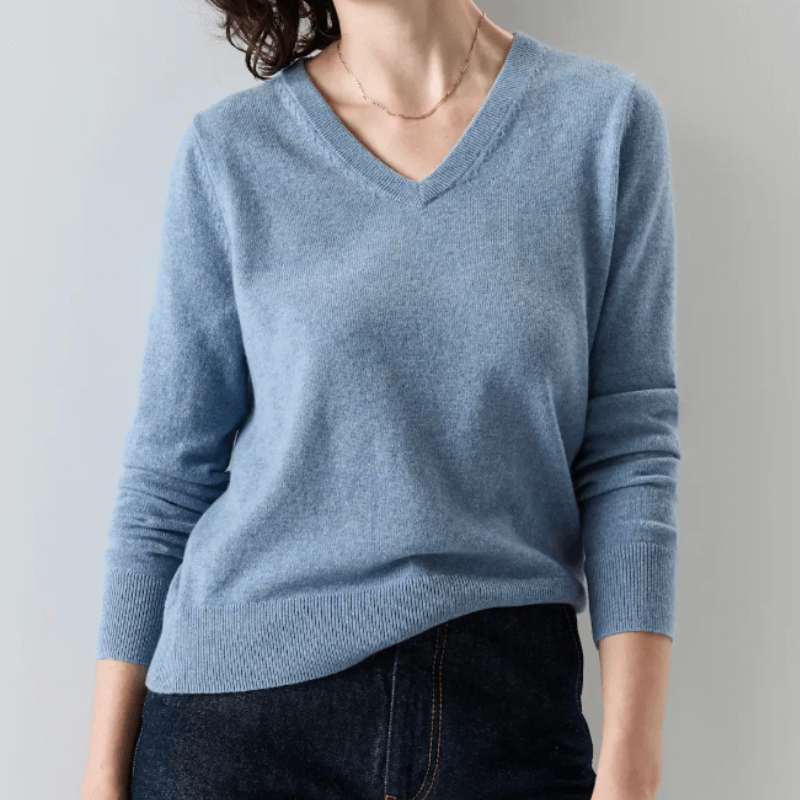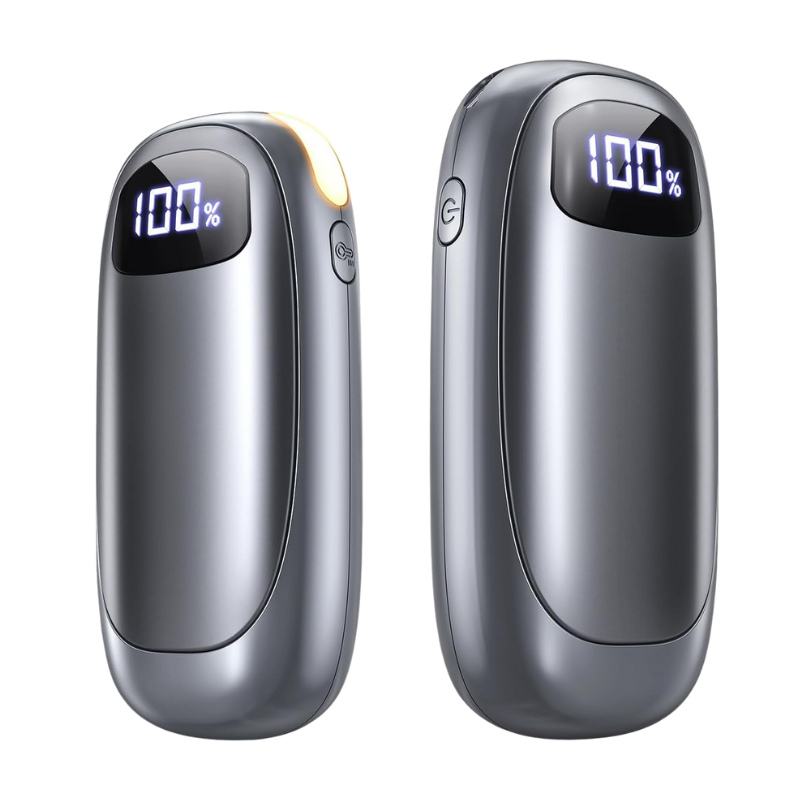Some entrepreneurs start with a business plan, an MBA, and a Rolodex full of contacts. My friend Sara Campbell started with a sewing machine, a knack for design, and a willingness to figure things out as she went — the same way she once ran her childhood lemonade stand.
Over the past four decades, she’s built a clothing brand known for its timeless style, commitment to U.S. manufacturing, and fiercely loyal customers, navigating industry upheavals, personal loss, and the ever-changing challenges of running a small business. In our conversation, she shares the twists and turns of her journey — from selling one-of-a-kind dresses in small shops to running more than 20 stores — and how she’s managed to keep her creativity (and her company) alive in the face of everything from overseas competition to pandemic pivots to punishing tariffs.
Let’s start at the very beginning, as Maria Von Trapp would say. When and why did you start your own clothing company?
I was 25 years old when I moved from California to Boston to pursue a Masters in Art Education, and then on to a Masters in Fine Arts. I worked a few jobs after college, but it was clear to me that I was very restless: My only goal and definition of success was to be able to support myself while having a career and being creative. I began a cottage-industry line of clothing that I sold to specialty stores. This was a wholesale business that grew to eventually 20-plus factories, all located on the East Coast. My strategy was pretty simple: Sell the product for more than you’re spending to make it, and you’ll have a profit! Actually, it was the same exact concept I used for the lemonade stands I ran as a kid. I had no idea on how to start a clothing company. It was about figuring it out as you go — and still is.
But obviously it was successful, so you must have known a little about what you were doing.
I still absolutely love making the product. I’ve sewn dresses since I was four years old, and I was determined to turn a profit to pay my bills and support myself. It was a long haul and I worked 24/7 but I didn’t mind. I was fearless and single, and had nothing to lose but time. I also believed strongly that I had a responsibility to give a percentage of sales back to causes important to women — that was just part of the deal. Around that time, I had the extreme fortune of befriending Corita Kent, a renowned artist and educator. She took me under her wing and became my mentor, best friend, and spiritual inspiration for the next five years, until her death in 1986. Her death was a turning point: My choice was to drown in loneliness from the loss, or carry on with great determination. I obviously chose the latter.
So when did you go from doing one-of-a-kind pieces to selling to specialty stores, to launching your own brand?
I had incorporated my business in 1985, but after Corita’s death, I decided to borrow $20,000 from my mother to fund the purchase of fabric and production. I’d take the bus to New York city to find fabrics, and return to my studio apartment where I would make samples. I turned those samples into production lots, and located a few quality clothing factories in Fall River and New Bedford, Massachusetts. One day, during my travels, I stumbled upon a young woman at the airport who was a vendor for Talbots. She quickly convinced me to give them a call to see if they’d be interested in my product. Bingo! My first order was for 50 dresses, and that became an invaluable partnership for me for more than 35 years.
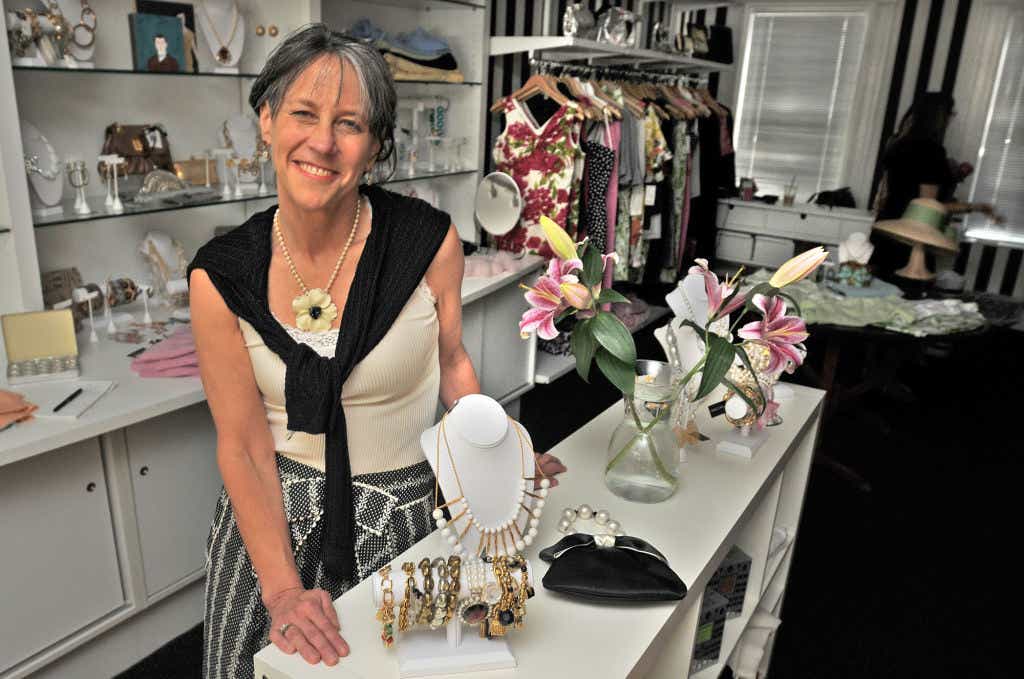
Who were some of your other customers?
I solicited every New England company who needed women’s dresses — we were really good at understanding the customer’s needs and aesthetic. In about 1988, life introduced me to my business partner, and best friend, Peter Wheeler. He had been VP of Design at Marimekko, and our spirits just meshed. Although I had a boyfriend, I was extremely lonely running the business, so Peter was a blessing — I’m convinced was sent to me by Corita. Together, we began design presentations and sold to vendors like Laura Ashley, Nordstrom, Neiman Marcus, J.Jill, Coldwater Creek, Harolds, Barrie Pace, Hart Schaffner & Marx, QVC, and many high-end specialty stores primarily on the east side of the states.
So you made all the products in the USA?
Yes! From day one, I was committed to the garments being sewn in this country. We were creating jobs in these local factories around New England and New York, and it felt very exciting. The volume was getting very, very big: In 1999, I was forced to produce bulk orders overseas for Talbots, because the U.S. factories couldn’t handle the needlework or the quantities. I kept my East Coast factories going, but it was a bittersweet move, and one that I never felt comfortable with. And if the product had blemishes, we had to hand-correct these errors on thousands of items, which happened one too many times.
That didn’t last forever though, did it?
My large-scale wholesale business eventually dried up by 2010, because these companies took all of our suppliers and started making their product themselves overseas. This was the norm for all vendors like myself who supplied these large companies. We all got hurt because these customers started in house design, production and sourcing departments. They no longer needed to buy from the outside. We went from twenty million in sales to two million in sales by 2010.
When did you open your first store?
My very first brick-and-mortar store was in Wellesley, Massachusetts. In January 2010, I spotted an empty space there, and after dropping my kids at school, I called the realtor immediately and asked if we could fill it with product in exchange for 10 percent of sales to pay rent, with another 10 percent going to St. Jude's Research Hospital. That was my first act of courage, to pivot and move away from wholesale and go direct-to-consumer through retail stores. I didn't take a paycheck for two years, but the employees got paid. My husband and I had two young girls, and we were living the life of small business owners, filled with stress, hard work, and tenacity. Nantucket was our second store and all the profits from those two stores went back into the business. Today, we have 22 stores with the strategy to open two more each year.
You've had to pivot again during the pandemic and really lean into online commerce. Tell me about this latest challenge with tariffs and how that's impacting your business.
When I first started this 40 years ago, we had factories making fabric in South Carolina, Georgia, and North Carolina. Now, those factories have closed down, so all the fabric comes from overseas.

Why did they close down?
The cost of making the fabric in the U.S. was so high, compared to overseas or Europe. Quite frankly, we also had a labor problem: As the labor force got more educated, they didn't want to work in the mills, the money wasn't there to pay competitively, and technology was taking over. China was way ahead of us in so many ways, and Europe had talent that couldn’t be replicated.
I import 100 percent of my fabric, because there are no longer fabric mills in this country, and I’ve been doing so for about 25 years. In the 40 years I’ve been in business, the tariff situation is currently the most brutal and disruptive it’s ever been. I’m being forced to add 55 percent on top of the fabric cost when it enters the United States, and depending where the fabric starts from, the tariff changes. The changes impact pricing, which impacts whether there’s profit to pay my payroll, health insurance, rent, etc. It has become virtually impossible to roll out a business plan, or commit to new hires, or even make a revised budget for 2025 — yet alone for 2026. It’s so unnerving and stressful, with all these unknowns every day.
Can you explain a little more about the price of fabric you buy overseas, and how it’s impacting your business?
Well, if three yards of fabric costs $45.00 and is made in China, but then ships to Italy, the Italian mill will ship the fabric to us in the United States. We’re tariffed on the cost of original origin, which is in this scenario China at 55 percent. Each country of origin has its own additional tariff assigned by President Trump. The cost of the fabric for this dress now goes from $45.00 to $69.75, after adding that 55 percent. There are two choices: Either raise the retail price or don’t. However, by keeping it the same, a small business can’t survive on the new margin, and cover costs.
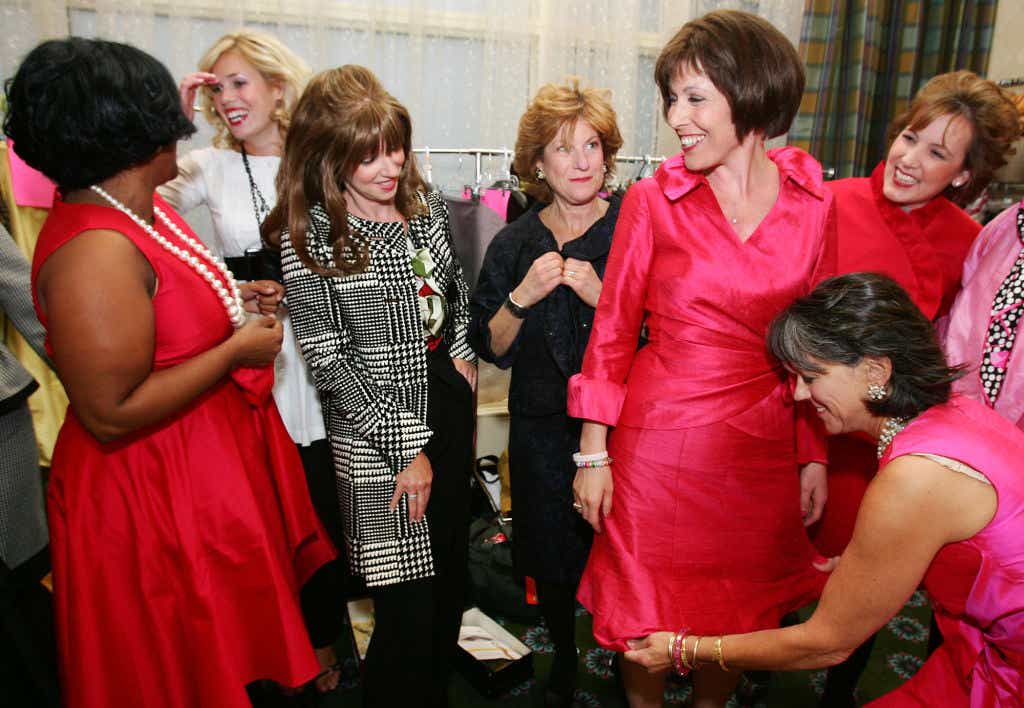
So what are you going to do?
Pray! And do my best to be on top of costs and pricing, and keep things as lean as possible. I don’t believe that the consumer is generally all that cognizant of products being “Made in the USA.” Our government certainly isn’t: We have zero tax incentive to produce in Massachusetts or the USA at all. The cost of our labor, per garment, has grown 30 percent in the last two years, and customers are reluctant to pay more. I’ll always keep more than 75 percent of my clothing produced here, out of loyalty to my stitchers and factories. And I’ll explore talents from other countries that design products we’re not capable of making here, such as embroidery and eyelet.
Will the price of doing business be handed down to the consumer?
Absolutely: If we want to stay in business and provide competitive benefits, we have no choice but to raise the prices. You need to know that in this kind of business, the net profit after all expenses are paid is very small — so small that it can’t absorb the cost increase due to tariffs. And that doesn’t include any cost-of-doing-business increases. This industry has never felt as challenging as it does now, but we’ll do everything we can to give the consumer the very best value for her money.
Generally, I have an educated and loyal consumer who understands these challenges. But once in a while, it’s really hard, because some people write very mean emails. Return policies are a nightmare, for instance. We make small runs of styles and have eight weeks to sell it at full price — we can’t afford an open-ended return policy, and people don’t like that.
Are your clothes still made in the USA?
Yes! Today, 90 percent of SARA CAMPBELL products are made in the USA. The 10 percent that aren’t made here are sweaters, since again, there are no sweater mills/factories in this country. As I said earlier, I’ll keep true to our commitment to manufacturing in this country. However, if the talent wanes and the factories dry up because they can’t attract new young stitchers, we’ll have no choice but to find new resources.
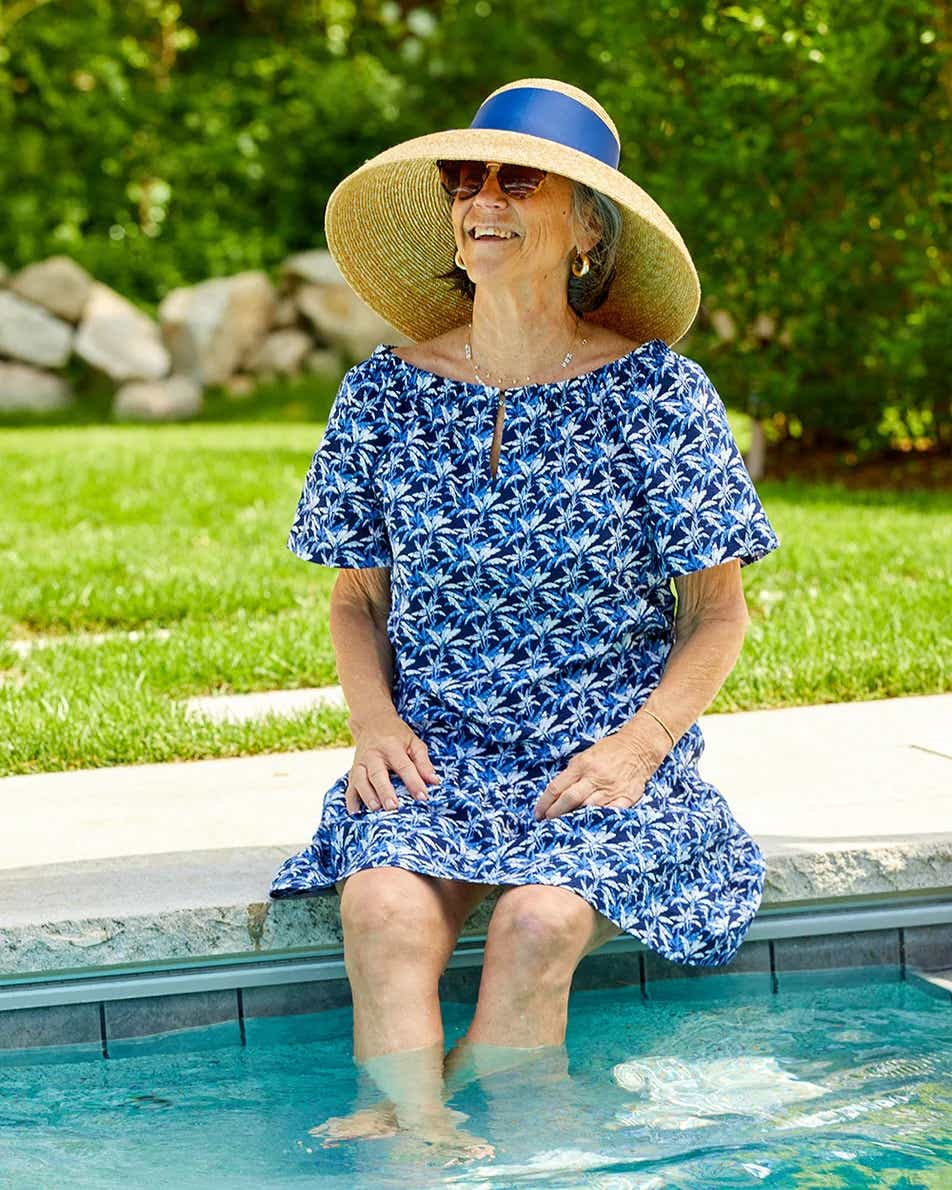
Running a small business sounds really hard, and now you have these tariffs to deal with. Do you ever feel like you want to “take this job and shove it,” as they say? What keeps you going?
That’s the best question yet, Katie. The very hardest part of running this business for me is human resources. For me and most of our team, this industry is our passion — but not everyone feels that way. Do I ever want to shove it? About every other day, especially when a lawsuit comes across my desk or an issue pops up.
What keeps me going? I listen to my gut — I will know when it’s time to pack it in. Until then, I can never, ever give up.







